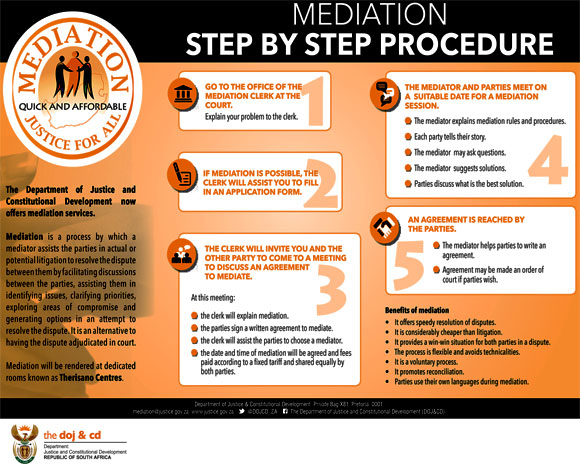Navigating Resolution: Effective Legal Mediation Procedures for Harmony


The Essence of Legal Mediation Procedures
Legal mediation procedures serve as a constructive alternative for resolving disputes outside the courtroom. Understanding the essence of these procedures is crucial for individuals and businesses seeking an amicable and efficient resolution to their legal conflicts.
Initiating the Mediation Process
The first step in legal mediation procedures is initiating the process. This typically involves both parties agreeing to engage in mediation and selecting a qualified mediator. Mediators are neutral third parties who facilitate communication, guide discussions, and assist in reaching mutually acceptable agreements.
Establishing a Mediation Agreement
Before delving into the substantive issues, participants in legal mediation procedures establish a mediation agreement. This document outlines the ground rules, confidentiality provisions, and the commitment of all parties to engage in good faith negotiations. Establishing this foundation sets the tone for a collaborative and productive mediation process.
Open and Confidential Communication
A hallmark of legal mediation procedures is the emphasis on open and confidential communication. Participants are encouraged to express their perspectives, concerns, and desired outcomes openly. The confidential nature of these discussions creates a safe space for candid conversations without the fear of statements being used against them in future legal proceedings.
Identifying Issues and Interests
Mediation goes beyond surface-level disputes; it aims to identify the underlying issues and interests of all parties involved. Through guided discussions, the mediator helps participants articulate their needs and concerns. Understanding these underlying factors is essential for crafting resolutions that address the root causes of the dispute.
Brainstorming and Generating Solutions
With a clear understanding of the issues at hand, legal mediation procedures involve a collaborative process of brainstorming and generating solutions. The mediator facilitates this creative exploration, encouraging participants to consider a variety of options for resolution. The focus is on finding mutually agreeable solutions that meet the interests of all parties.
Negotiating and Compromising
Negotiation is at the core of legal mediation procedures. Participants work together, guided by the mediator, to negotiate terms and reach compromises. The mediator assists in managing power imbalances and ensures that each party has an equal opportunity to contribute to the negotiation process. Successful negotiations lead to the development of a legally binding agreement.
Drafting the Mediated Agreement
Upon reaching a resolution, the next step in legal mediation procedures is drafting the mediated agreement. This document outlines the agreed-upon terms and conditions, serving as a blueprint for the parties’ future actions. The mediator ensures that the agreement is clear, comprehensive, and reflective of the intentions of all parties involved.
Review and Approval
Before finalizing the mediated agreement, participants have the opportunity to review its contents. Legal mediation procedures allow for thorough examination to ensure that the agreement accurately captures the negotiated terms. Once all parties are satisfied, they formally approve and sign the agreement, making it legally binding.
Post-Mediation Follow-Up
Even after the formal conclusion of legal mediation procedures, there may be a need for post-mediation follow-up. The mediator or a designated entity ensures that both parties adhere to the terms of the agreement. Follow-up may include additional discussions, clarification of terms, or addressing any issues that may arise in the implementation phase.
Embracing Resolution and Moving Forward
In conclusion, legal mediation procedures offer a constructive path to resolution, emphasizing collaboration, communication, and compromise. Embracing this process enables parties to move forward amicably, avoiding the adversarial nature of traditional litigation. Explore the possibilities of legal mediation procedures at Legal Mediation Procedures and empower your journey towards harmonious conflict resolution.







